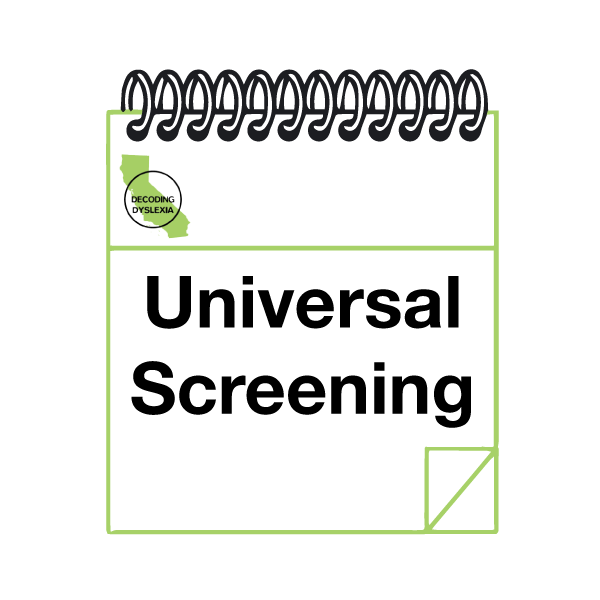
Universal Screening for Reading Difficulties
Options after Screening
After completing universal screening and identifying students at risk for reading difficulties in the general education setting or Tier 1 of an RtI/MTSS model, it is important to immediately begin differentiated instruction that is direct, explicit, and systematic in small groups.
Tier 2 Intervention should be based on additional diagnostic assessments (that follow screening) to pinpoint specific areas so that targeted, evidence-based instruction and intervention can be applied to specific deficit skills.
Along this instructional continuum, it is vital that students at-risk for reading difficulties receive both their general education English Language Arts curriculum in addition to this targeted, evidence-based instruction that is direct, explicit, and more intensive in a small group of 1-5 students, 4-5 days/week, as part of an RtI/MTSS framework, delivered by a teacher trained in Structured Literacy approaches.
Warning
Universal screening is useless unless it results in interventions that target deficit skills with evidence-based instruction by highly-trained educators.
Tier 2 Level of Intervention Includes:
- Frequent progress monitoring
- Documenting number of sessions, length/time of each session, concepts covered, what materials were used and how each individual student performed during the lesson
- Use of evidence-based methodology or curriculum*
*Interventions should be evidence-based and follow Structured Literacy methodology. (More about Structured Literacy™ Instruction and RtI/MTSS can be found in upcoming educator modules – currently in development.)
Video
Excellent videos for next steps (*If you are viewing from a phone or tablet swipe left or right over the image below to see additional content videos)
Slide Deck
It should be noted that the Florida Center for Reading Research and the University of Virginia have a number of free teacher resources including student activities that focus on key areas such as development of phonological and phonemic awareness skills and letter-sound /alphabet knowledge.
The University of Oregon has developed time-sensitive maps for skills children should master that are linked to particular points in time during the academic year. These skills are cumulative and developmental. (See kindergarten through third grade curriculum maps).
Key Takeaway: “If we know a child has a higher risk of having reading difficulties going into preschool or kindergarten, we can monitor them to see how they perform and give them very explicit, direct, and systematic instruction early on. Fortunately, this type of instruction not only benefits those who struggle, but it also benefits those who don’t, so it’s effective for all kids.” (National Institute of Child Health and Human Development)
Additional Reading
The International Dyslexia Association’s “Knowledge and Practice Standards for Teachers of Reading” define what all teachers of reading need to know and be able to do to teach all students to read proficiently. The IDA Standards were written for two main audiences: classroom educators and dyslexia specialists. IDA has written separate narratives for each audience.
California Department of Education’s “California Dyslexia Guidelines” were written in response to the passage of Assembly Bill 1369, Chapter 647, Statutes of 2015 (a bill sponsored by Decoding Dyslexia CA) and which added sections 56334 and 56335 to California’s Education Code. The purpose of these guidelines is to assist regular education teachers, special education teachers, and parents in identifying, assessing, and supporting students with dyslexia.
“Dyslexia in the Classroom: What Every Teacher Should Know” is a toolkit by the International Dyslexia Association and can be used to provide classroom teachers with basic information about dyslexia, dispel some of the myths and misconceptions surrounding it and be a resource that will increase their capacity to ensure the success of the diverse group of learners in their classrooms.
Sources
-National Institute of Child Health and Human Development, “Decoding Learning Disabilities”
Office of Special Education and Rehabilitative Services (OSERS). (2011, January 21). Memorandum to State Directors of Special Education. Washington, DC: United States Department of Education.
